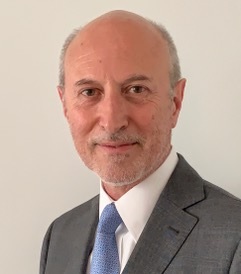 Eduardo Minardi, founder, Minardi Global, offers advice on how the industry must prepare to adapt in response to a future mobility vision very different from today, ahead of his presentation at the forthcoming Tire Technology Expo Conference.
Eduardo Minardi, founder, Minardi Global, offers advice on how the industry must prepare to adapt in response to a future mobility vision very different from today, ahead of his presentation at the forthcoming Tire Technology Expo Conference.
Describe your presentation.
The first part summarizes how mobility megatrends are impacting and will further impact the tire industry. Then, I will share a conceptual framework to lead change and successfully cope with those challenges, including the importance of using dynamic scenarios when developing strategy; how compelling vision, culture, talent and governance systems are linked and support new strategic roadmaps and transformations.
What are the key trends that will shape the future tire industry?
One of the challenges humanity faces is how to move and serve a growing population that is increasingly concentrated in megacities. So far, we have roughly multiplied by 10 the number of vehicles on the streets in the last 60 years. This has resulted in congestion, contamination, inefficient use of assets – vehicles and parking space – and a negative impact on our climate and quality of life.
The good news is that this challenge has viable solutions. There is a combination of technologies, regulations and emerging social habits that are changing the business environment. Mobility will progressively be greener, shared, multi-modal, connected and autonomous. As it turns out, vehicles are becoming ‘software-on-wheels’.
Despite being gradual, this change is affecting the whole value chain, from tire development to marketing and distribution, including the customer-facing aftermarket services. Also, and independently of the future of mobility, the value chain is also being impacted by digital technologies together with the progressive use of artificial intelligence.
All of the above requires changing the business and operating models of the tire industry. In fact, the definition and business domain of the industry will be different – other players will eventually compete with tire companies, while tire companies will (some are) enter into new business territories.
The companies that do not understand, lead or adapt to the new business ecosystem will die or lag behind and remain as commodity producers.
Would you agree that the tire industry is inherently conservative?
Since its inception, the tire industry has focused on producing better tires. Over time, it became a capital-intensive industry, becoming more manufacturing-driven and slow to change. In recent years, however, we have seen a significant and positive change in terms of response to megatrends and technologies.
Leading tire companies have publicly announced changes in vision, focus and perspective considering the new ecosystem I mentioned above. Some of them are investing in new fields beyond the traditional tire manufacturing activities and are testing or using new technologies to reposition, differentiate and improve future business performance. Being large organizations, it will take time for them to change direction.
In parallel, tire companies still live from developing, producing and selling tires as we know them today. That’s the bread and butter of the industry. The revenue and income of the new activities will probably surpass that coming from traditional tire sales when the new ecosystem matures. We may see an inflexion point during this decade.
Meanwhile, there are a large number of tire players still improving product quality and performance. But they do not appear to have sensed or invested in the direction and speed of the top leaders. I also think there are many question marks related to the role each tire company will play in the future.
The issue for all the players is to manage risks as we live and do business in a VUCA [volatile, uncertain, complex, ambiguous] environment. However, it is not easy to prioritize where to invest to optimize each company’s positioning and performance. The winners will probably be the ones best equipped to combine core competences with the know-how to fit new market (and latent) demands – within and beyond tires – and to lead change at the same speed inside their organizations. In conclusion, part of the industry is evolving while I see most companies still continuing in ‘traditional mode’.
Will it take a new generation from outside the industry to lead the change?
All companies have a different profile, history and culture. Having made that consideration, success cases show that new management is more likely to succeed in driving change. Executives may come from the inside or the outside. In any case, they will need to create a compelling vision, have the know-how to lead change and the determination to move the agenda forward.
Some companies have already hired talent from the outside (from board members to executives, advisors and professional experts) while developing internal capabilities. The ideal is to learn how to blend the inside and the outside and develop a culture of debate that challenges the status quo and fosters innovation.
What advice can you offer with regard to coping with change?
Change is about managing and balancing external and internal tensions successfully. The external tensions come as a company needs to adjust the business to the dynamic ecosystem of the industry. The internal tensions are the consequence of different perceptions, speed and understanding of that reality by the different parts of the organization.
Sometimes, leaders quickly respond to the external challenges but leave their organizations behind. At a certain point, the company and the leader will pay the consequences of the gap. Others are more concerned about taking risks or rather like keeping the internal harmony and do not fight enough to respond to the external challenges. The consequences would be the same.
Successful change has to consider more factors than defining a new business and operating models. It is also crucial to create and communicate a compelling purpose; that is, to ensure people understand why there is a need for change, modeling a culture that responds to the vision and strategy, hiring and/or developing new capabilities, and using change leadership techniques to align the organization. All of them are parts of the puzzle to win. If one piece falls apart, success will be compromised.
The role of the executives is to create diverse teams and promote debate and mechanisms for the decision-making process to be informed and inclusive. There are three words I like using when aligning teams: communication, collaboration and (understanding and managing their) interdependences. This requires establishing the right governance system to ensure the organization converges toward decisions for the greater good and operates with aligned execution.
What’s a good starting point when considering change?
A simple piece of advice would be to ask yourself the following questions: Do your executives and teammates understand the risks and opportunities the dynamic future scenarios pose for our future? Do you have a common purpose beyond business goals – remember, society and individuals (in particular new generations) are seeking companies that create social value rather than just pursue business objectives. Would such a vision also encourage your teammates to perform with greater effort? Do your people have the capabilities to perform in the new competitive landscape? Do you know how to lead the rational and emotional impact that change will have on each member of your team? Have you measured and mapped your culture in relation to your strategic direction? Do you know the elements of your culture that need to be reinforced and which ones need to change? Do your culture and prevalent leadership styles foster or hinder change, innovation and performance? Are you, the leaders, modeling the right behaviors? Do you have in place a governance system to foster performance? Are you aligning the organization behind common goals? Do you break down silos, speed up change and make decisions for the greater good?
These are some of the questions I will try to answer during my presentation in Hannover. The leaders who develop capabilities to lead change with a holistic approach and know how to use key enablers, such as governance, will have more opportunity to build sustainable change and see their careers grow.
 Eduardo’s presentation will be part of the Tire Technology for the Vehicle Revolution stream, on Day 1 of the conference. View the full program here. Book your delegate pass now to get 15% off the full price.
Eduardo’s presentation will be part of the Tire Technology for the Vehicle Revolution stream, on Day 1 of the conference. View the full program here. Book your delegate pass now to get 15% off the full price.



